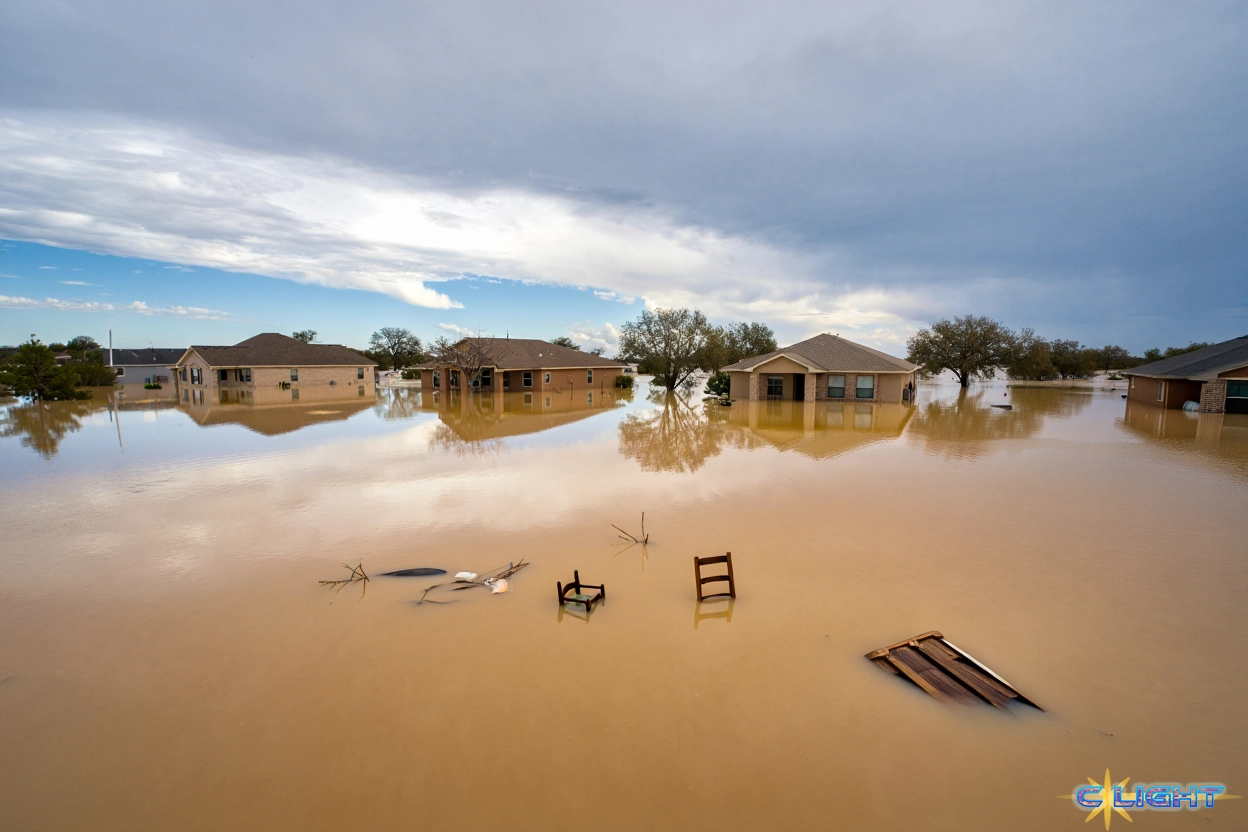Indianapolis, IN – As the echoes of Independence Day celebrations fade, a more somber resonance lingers across the American landscape. This year, the nation’s 249th birthday has been indelibly marked not by unified jubilation but by the raw, unsparing realities of loss, painting a stark tableau of human vulnerability and societal fracture. From the unpredictable wrath of nature in Texas to the chillingly preventable violence in America’s heartland, the holiday weekend has forced a profound and painful introspection into the very fabric of American safety and well-being.
The depth of sorrow is indeed impossible to comprehend when contemplating the more than two dozen lives claimed by the catastrophic flash floods in the Texas Hill Country. The Guadalupe River, usually a serene backdrop for summer camps and family recreation, transformed into a raging torrent, swelling 26 feet in just 45 minutes, inundating communities and sweeping away infrastructure. The sight of rescuers pulling individuals from trees and the agonizing wait for news of over 20 missing girls from Camp Mystic – a nearly century-old institution that rooted generations in Christian values – casts a long shadow over the resilience of a people of faith.
The official narrative, almost perfunctory in its starkness, outlines a disaster of unprecedented scale. Despite “advance notice” in the form of a flood watch and subsequent “particularly dangerous situation” warnings from the National Weather Service, the sheer intensity of 10 to 15 inches of rain in just four hours caught many, including officials, “off guard.” The scientific explanation points to stalled “training storms” fueled by remnants of Tropical Storm Barry and unusually warm Gulf waters, hinting at the larger, insidious specter of a changing climate. Yet, in the face of such overwhelming natural forces, a different, more human element emerged: a cultural complacency rooted in prior experience. The belief that “the water has never come up that far before,” or that a large pickup can simply “drive through that unknown depth,” tragically underscores a collective blind spot to warnings, transforming knowledge into a mere suggestion rather than a command for survival. The human psyche, it seems, struggles to reconcile faith in an unseen deity with a stark unwillingness to heed tangible, meteorological warnings. “Why did God allow this to happen?” becomes a convenient, albeit heartbreaking, scapegoat for a failure to act.

Yet, hundreds of miles away in Indianapolis, a different, more disturbing tableau of loss unfolded. Here, the deaths were not acts of nature, but chillingly preventable consequences of human decisions. The holiday weekend saw a grim tally: a woman dead from an “accidental” shooting on a popular avenue, two critically injured near a beloved park, and a downtown mass shooting leaving two dead—including a juvenile—and five injured. This level of violence, a tragic departure from declining national trends, has become an unwelcome fixture in the city, with homicides rising year after year.
Here, the question “Why, god, why MY daughter, son, wife, husband?” rings out, but the search for blame turns from the divine to the human. As IMPD Chief Chris Bailey, visibly frustrated, declared in the wake of the downtown shooting, “Hundreds of unsupervised kids down here… we are not your children’s keepers! You are!” His impassioned plea to parents and guardians, highlighting instances of juveniles carrying assault rifles and a brazen disregard for consequences, points to a profound breakdown in parental accountability and communal responsibility. The police, even with “hundreds of officers,” acknowledge their limits, recognizing that law enforcement alone cannot mend a fractured social fabric where individuals resort to lethal force to resolve disputes. The chilling reality is that someone, in each instance, made the conscious decision to pull a trigger, convinced that homicide was the only path out of their predicament, oblivious to the anguish that would ripple through an unsuspecting family.

Whether by the roaring current of a swollen river or the sudden, violent impact of a bullet, every lost life represents far more than just a corporeal body. It is a lost purpose, a lost ambition, a lost friendship, and a lost love. It is the obliteration of all the energy, potential, and unique light that a person brought to the table of existence. The depth of that void is immeasurable, regardless of the cause.
In Texas, the questioning of faith may emerge from the perceived randomness of nature’s fury, but a profound cultural resistance to heeding warnings remains. In Indianapolis, the search for a scapegoat points directly to the human actors and the failures of a social system, but the sorrow is no less acute.
For many, this Independence Day will forever be a date etched in the heart with profound heartache. Fireworks no longer distract. Picnics fail to fill. Parades and marching bands, once symbols of unity and joy, now speak to a memory that will eventually dull, but never truly leave. They all mourn—the families in Texas waiting for news of a missing child, and the families in Indianapolis facing the brutal reality of preventable violence. The shared experience of grief, a crucible of unyielding sorrow, binds these disparate tragedies, forcing America to confront its vulnerabilities and the deeply personal cost of a nation struggling to define its safety and well-being.
Discover more from Chronicle-Ledger-Tribune-Globe-Times-FreePress-News
Subscribe to get the latest posts sent to your email.








